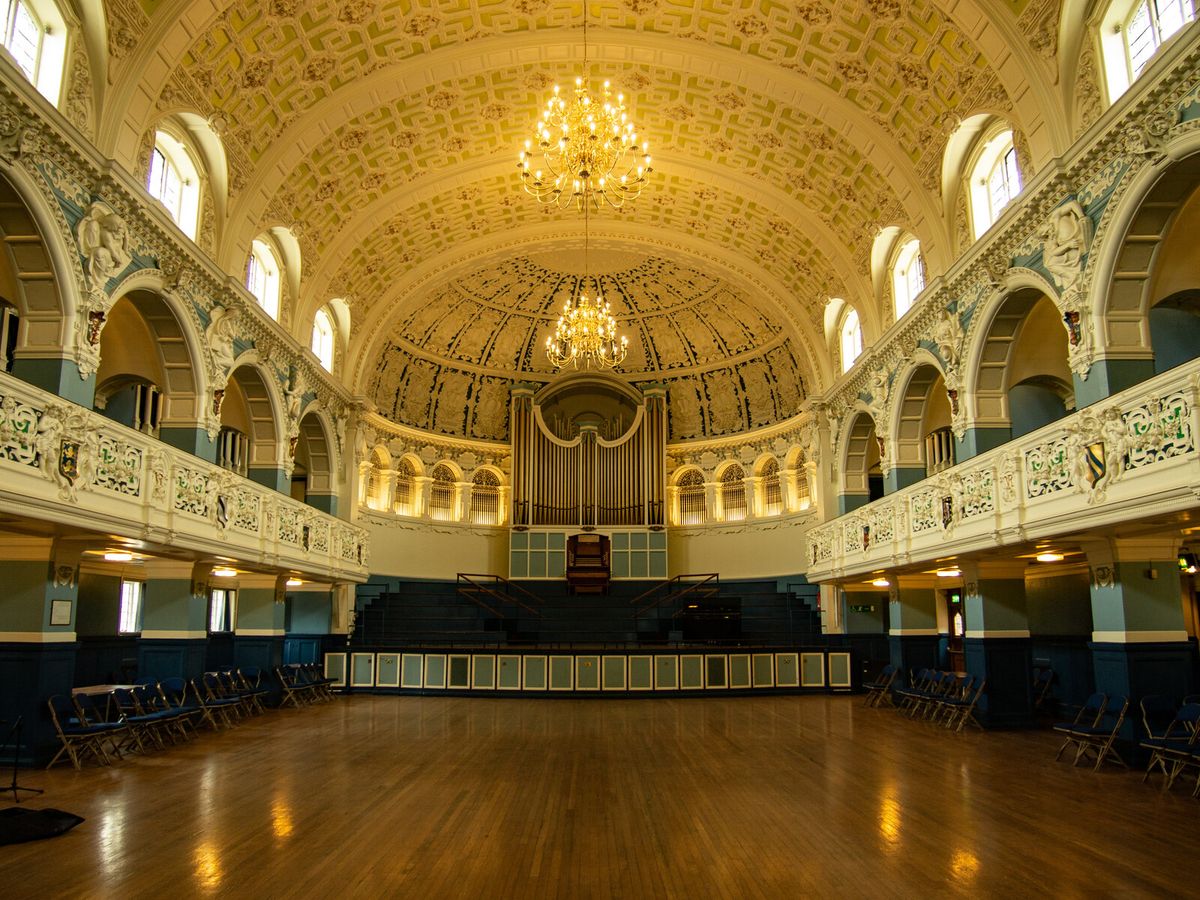Budgets in the city

This is quite a week in Oxford! A two budget week. Let joy, and spreadsheets, be unconfined.
One at Oxfordshire County Council and now, today, it is Oxford City Council’s turn. The County Council looks after roads, education, social care (and much more) while the City Council is housing, licensing, waste disposal (and, again, much more as you will see. Cemeteries?). City (and district) councils have smaller budgets and might seem less consequential than counties, but they are charged with incredibly important work on social housing and support for the homeless.
Oxford City residents’ council tax funds both OCC and the City Council. Residents elsewhere in the county pay for OCC and their own District Councils – though yesterday, some councillors felt that the debate was ignoring the county beyond Oxford.
Half of the city’s councillors are up for election in May 2024, so this budget will be keenly watched – though cynics among you may say only for lines on election leaflets.
In contrast to the County, the Labour group leads the City administration (22 councillors). In opposition are the Lib Dems (9), Greens (6), and confusingly, three flavours of Independent – most of whom left Labour over their position on Gaza. These are the Oxford Socialist Independents (6), the Independent Group (3), and two “non-grouped” independents.
The background to the City budget is very similar to the County. Inflationary pressures, wage rises and a shortfall in government funding have taken their toll. The government offered an average of 6.5% increase in funding as a one-off payment to make up shortfalls. Oxford received 4% – not enough to cover rising costs. Oxford is a hub for innovation and enterprise: business rates generated locally are over £110m, but the City Council is only permitted to keep a fraction of that, with some for the County and the balance returned to the government. One of the key themes is the idea that councils should lobby the government to be able to keep more locally generated funds to fund local services.
Mind the gap
So, how to close that gap? You can save money; you can charge residents more for services, subject to Government caps on council tax rises; or you can generate more income through enterprise.
The so called ‘Oxford model’ is where income streams fund expenditure. City Council owned companies like ODS (the people that collect your bins) also perform tasks like road maintenance, and charge the County Council for doing this. There’s also a joint venture, OXWED, to redevelop the land at Oxpens, adjacent to the ice rink. Some of these provide large regular income streams, like ODS. Others don’t yet – but are planned to generate more in the future.
Interestingly the budget was produced in draft form, and sent out for consultation. Did you respond? Neither did we. There were just 247 responses from a population of 160,000, which goes to show that small loud voices can really make a difference. (Fill out the consultations, people!)
Here’s a summary of what the responses said. Broadly, the proposed budget echoes these priorities, minus the verbatim which you may or may not raise an eyebrow at…
- 52% supported an increase in council tax
- 85% supported an extra increase in council tax for second homes
- 45% supported an increase in charges for garden waste
- 56% supported a reduction in frequency of cutting the grass in parks
The most important things according to respondents, were more affordable homes, and maintaining parks and open spaces. The least important were encouraging customers to self-serve, and funding for volunteer and community groups.
Suggestions from the survey included, and we quote:
“Reduce council staff pay and find cost effective staff”
“Buy more cars for parking enforcement” (the Clarion would like to know how this would work, exactly?)
“Eliminate grassed areas by converting them into wildflower meadows”
“Introduce a tourist tax”
Labour’s proposed budget
So what is the budget proposal?
- An increase in council tax - given the above, you were expecting that. Oxfordshire residents will pay an average increase of 4.69%. Some increase is offset by the Council Tax Reduction Scheme, of which more later.
- Savings found in the leisure centre contract given to Serco of c. £300k
- Savings found in ICT of c. £360k
- Savings in the contact centre due to the rollout of universal credit
- “Wage stability” in a two year pay deal with unions
- Savings of £36k found from reducing grass cutting in parks
- Savings of £150k by removing some voluntary sector/community grants
Income is generated from a surprising variety of places. Here are some highlights. ODS as a revenue stream is worth £5.1m, with ambitions for more. The City Council-owned Covered Market is now fully let, minus one unit; late nights are increasingly popular, and there are competitive bids when a unit comes on the market, providing the council income.
But maybe the City Council budget is more fun than you were expecting:
- Licensing for a gambling establishment does not increase.
- Licensing for late night trades, peripatetic traders (ice cream vans etc) goes up broadly 5%
- Licensing for acupuncture, dog breeding and running a zoo, also up 5%
- If you rent a garage, it’s up by 7.7%
- Licensing a sex shop gets more expensive, it’s up 8%
- Fees for cemeteries: broadly burial fees do not increase, unless you want a very flashy headstone
- Pest control is up 10% specifically “including Pharoah Ants” (the Clarion doesn’t want to google that, lest the algorithm forever serve creepy crawlies to its feed)
- Garden waste and bulky waste collection is up 13% (remember this one)
- Car parks up 5% in the city centre and outside the city centre + 9% if you’re staying less than an hour. Interestingly car parking has not returned to pre-covid levels but letting rooms in the Town Hall has done, so the cost increases sharply by 10% there.
Spends, capital and otherwise, come from a variety of places. Pay inflation takes £244k before you start. There’s £25k for paving in Magdalen Woods “to enhance the appearance and accessibility of the area” (hold that thought). There are one-year costs relating to repairing Gasworks Bridge, £0.5m on the Covered Market roof, and £1m for cemeteries.
There are significant capital costs in house building over multiple years, particularly in the Oxford North and East Oxford developments, to deliver affordable homes. Sometimes budget items are simply reshuffling earmarked money from an external source into a specified project – so the biggest ticket item, £7.2m for “Osney Bridge”, is actually housing development money for the new pedestrian and cycling bridge from Oxpens to Osney Mead.
Accountability and democracy
If you will permit us a brief digression, councils – and Oxford City Council is certainly no worse than any other – have a long way to go in making this information accessible and understandable.
The Clarion editorial team was sent on a wild goose chase trying to find out why the City Council would spend £7.2m on “Osney Bridge”, which is what everyone in Oxford calls the bridge carrying Botley Road over the River Thames – and where expensive pipe repairs are required after an Environment Agency boat hit Thames Water’s water main. This line in the budget, one of the biggest, appears to be undocumented in the narrative documents that accompany it.
Several hours of head-scratching later, we realised they don’t mean “Osney Bridge” at all: rather, the spend is on the new bridge from Oxpens to Osney Mead. But if it takes us hours to work out, and we take an unhealthy interest in these things, it is essentially out of bounds to the general public – other than through press releases and the small amount of local government reporting that exists. (At the time of writing, neither the Oxford Mail nor BBC Oxford have reported on Oxfordshire County Council’s budget yesterday.)
Council budgets are staggeringly complicated. Add in amendments, split the spending across multiple budget buckets and cost centres, spread it across three years…
The Clarion is not an accountant. We mean it when we say hats off to the people that prepared this budget, the councillors that worked through it, and the Scrutiny Committee that was – just as OCC’s was – extremely rigorous in kicking its tyres. But we believe in an educated city like Oxford, in an age when data journalists are pioneering new, interactive ways of explaining complex numbers, there must be better ways of presenting this.
The Lib Dem amendment
The Liberal Democrats are the largest opposition group. Their main amendment would cancel cuts to the Council Tax Reduction scheme – in other words, they want to prevent an increase in Council Tax for less well-off residents. They say the proposed budget “would expose households earning less than £167/week to an additional tax liability of around £300 a year or £25 a month”.
To fund this, they want to sell – wait for it – a £200k hunting trophy that is owned by the council and not on display. They also want to cancel a £16k spend on flowerbeds in Frideswide Square (“nice to have, but of a very different category of urgency”), and reduce allowances for the Cabinet.
(A hunting trophy? Really? Apparently it’s called the Morrell Trophy. We have been unable to find any information about it. But we would really like to. Are we literally selling off the family silver to pay for the current economic crisis?)
A second amendment proposes repurposing the funding in paving Magdalen Woods to fund working on Vision Zero with the County Council.
The Green Party amendment
Similarly to the Lib Dems, the Green Party wish to offset council tax increases for the poorest by selling the Morrell Trophy (seriously, how ugly is this thing?); reducing cabinet allowances (we can see some consensus here); and increasing car park charges.
They don’t like the flower beds in Frideswide Square either. They’d also like to remove the increases on bulky and garden waste as hitting the poorest. They propose setting up a discretionary hardship fund for council tax, though details on how that would run are rather thin on the ground. Finally, they would put back the voluntary sector grants removed by the administration proposal (grants which the survey said were not popular among the self selected panel of 247, though we think that says more about survey respondents than the social value of the grants).
The Independent Group amendment
Only the three-strong Independent Group has put forward a set of amendments; the larger Oxford Socialist Independents have not.
They say that, since fly-tipping has gone up by 75% since the bulk waste charge was introduced, removing the charge would actually save money by reducing cleanup costs. Park cleaning could also reduce, and would be less needed if the bulky waste charge was removed. They also want to close underused public toilets to save funds. This would save £83k. (There’s a “spend a penny” joke in there somewhere.) They, too, wish to reduce cabinet allowances. There is no mention of the trophy or the flowerbeds, but there is a mention of the war in Ukraine.
The Conservative amendment
There isn’t one. There is no Conservative councillor on Oxford City Council.
What will happen?
How will this play out? It’s anyone’s guess. Given the sheer scale of the City Council budget, the amendments seem relatively tame – and collaborative. There is certainly much less difference between the parties than was on display in yesterday’s Oxfordshire County Council budget debate.
All joking aside, we wish the best of luck to those attending council to vote on the budget tonight. Councillors and officers do an astonishing amount of work, mostly unsung (the budget packs? Hundreds of pages for them to prepare, verify, scrutinise and digest) and at the Clarion we try and shine a light on it. It’s our community. Our bins, our cemeteries, our local businesses, our housing (shortage), our car parks, our parks and waterways.
And we would really like to see what the Morrell Trophy looks like.


